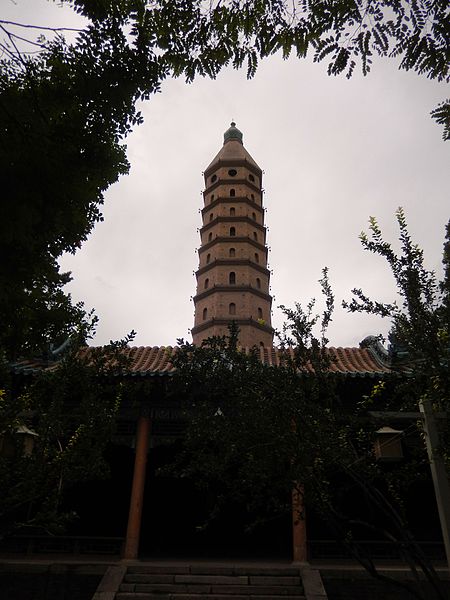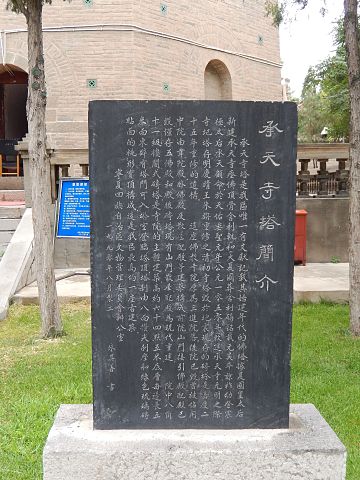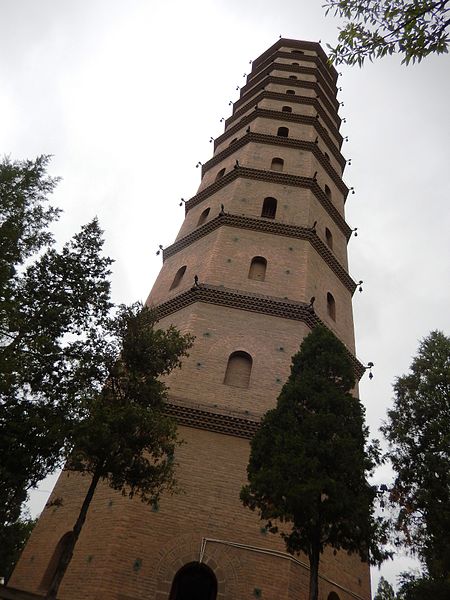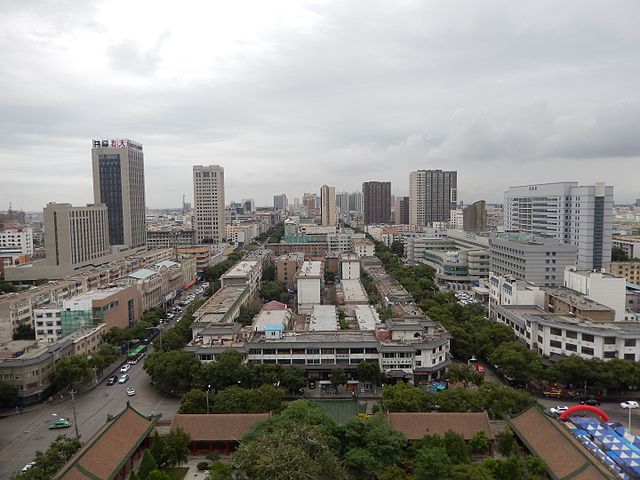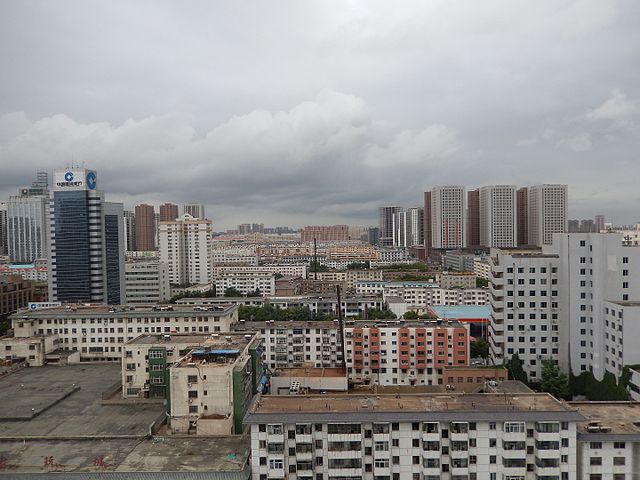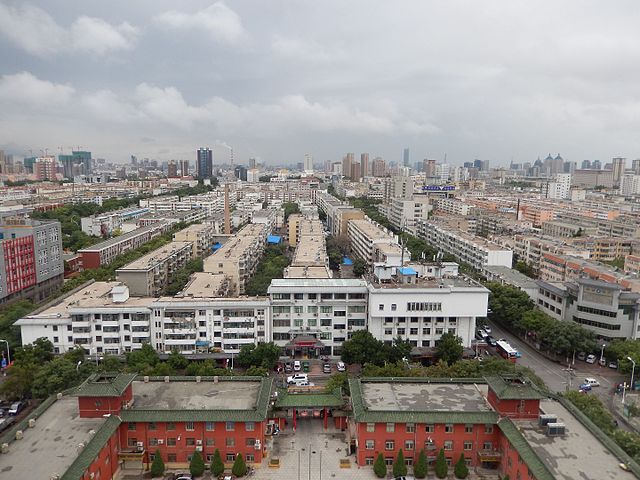Diary of a Rambling Antiquarian
Thursday, 18 August 2016
Chengtian Pagoda
I arrived in Yinchuan, capital of the Ningxia Hui Autonomous Region, yesterday afternoon, flying from London via Dubai directly to Yinchuan. Yinchuan is the ancient capital of the Western Xia kingdom established by the Tangut people, and it is my first time ever to visit Yinchuan or Ningxia. I am here primarily for a two-day conference on encoding Khitan scripts in Unicode on Saturday and Sunday, but I will be in China for two weeks, and there are a lot of sites associated with the Tangut and Khitan peoples that I want to visit while I am here.
In the morning we visit the Ningxia Museum, which has a huge collection of petroglyphs from the nearby Helan Mountains and a large collection of Western Xia (Tangut) artefacts. After three hours in the museum, my friend Slava and I decide we'll walk to the Chengtian Temple Pagoda 承天寺塔 (or Western Pagoda 西塔), one of two pagodas still standing in the Xingqing District (興慶區) of Yinchuan, the location of the Western Xia capital of Xingqing (興慶).
Entrance ticket for Chengtian Temple
It takes about an hour to walk there, and by the time we arrive it is late in the afternoon. It is already a dull, overcast day, and at this time of the day the light is very poor, and my pictures of the pagoda are not great.
Approach to Chengtian Temple Pagoda from the East
The Chengtian Temple was founded by the Empress Dowager Mozang (没藏皇后), consort to the first Emperor, Li Yuanhao (r. 1038–1048), after her infant son had acceded to the throne as Emperor Yizong of Western Xia (r. 1048–1068). The pagoda was built as a reliquary pagoda, intended for keeping some pieces of the head bone of the Buddha, and also in order to bring protection to the young emperor, who was just three years old when it was completed on the 25th day of the 3rd month of the 1st year of the Tianyou Chuisheng 天祐垂聖 era (19 April 1050). Five years later, in 1055, a set of the Tripiṭaka given by Emperor Renzong of Song was deposited at the Chengtian Temple.
Pedestal Tablet giving the History of the Pagoda
By the beginning of the Ming dynasty the temple was in ruins, and only the pagoda remained standing. A poem entitled "Sound of a Bell at the Tall Pagoda" (長塔鐘聲) by the early Ming poet Wang Xun 王遜 describes the desolation of the temple:
鳴鐘長塔寺,不見昔年僧。
聲寂三千界,音銷十二層。
廢基妻冢在,陳跡牧兒登。
有待莊嚴日,無常驗智興。
The bell rings at the temple of the tall pagoda, but I do not see the monks of yore.
Sound is extinguished throughout the three thousand realms, noise vanishes up to the twelve levels [of heaven].
The grave of someone's wife lies in the abandoned ruins, boys tending sheep clamber among the scattered remains.
Awaiting the day it will return to splendour, in this transient world a [Duan] Zhixing will appear.
Duan Zhixing 段智興 was a 12th-century king of the Dali Kingdom who was renowned for repairing Buddhist temples, and Wang Xun uses him to refer to his patron, Zhu Zhan 朱栴 (1378–1438; Prince Jing of Qing, the 16th son of the Hongwu Emperor), who was subsequently responsible for renovating Chengtian Temple. The renovation of the temple was completed by Zhu Zhan's grandson, Zhu Suikan 朱邃坎, in 1469.
On 3 January 1739, Yinchuan was hit by a large earthquake, and the pagoda was destroyed. In 1820 the present eleven-storeyed, octagonal brick pagoda was built on the site of the original pagoda. It is said that the current pagoda emulates the shape and style of the original Western Xia pagoda, but it does not look or feel like a Western Xia pagoda to me, and I doubt that this is an authentic replica of the original pagoda. Unfortunately there are no known artistic depictions of the original pagoda to compare it with.
Chengtian Temple Pagoda Towering into the Sky
The present pagoda stands on a square platform 26 metres across and 2.6 metres high, and the pagoda itself is approximately 64.5 metres in height. The pagoda is hollow, with an entrance in the east wall, and wooden stairs lead up to the top storey, where there are windows facing in four directions. On payment of a small fee we were able to enter the pagoda, and climb up to the top, from where we had a fine view of the modern city of Yinchuan, depressingly similar to all other Chinese cities. We could only imagine what the view would have been like nearly a thousand years ago when the original pagoda was built.
Looking East
Looking South
Looking West
Looking North
[Note. Some of the text of this post is copied from the Wikipedia article on Chengtian Temple Pagoda, but as I wrote that article I think it is acceptable to recycle some of it here.]
Ningxia | Pagodas | Western Xia
Index of Rambling Antiquarian Blog Posts
Rambling Antiquarian on Google Maps

